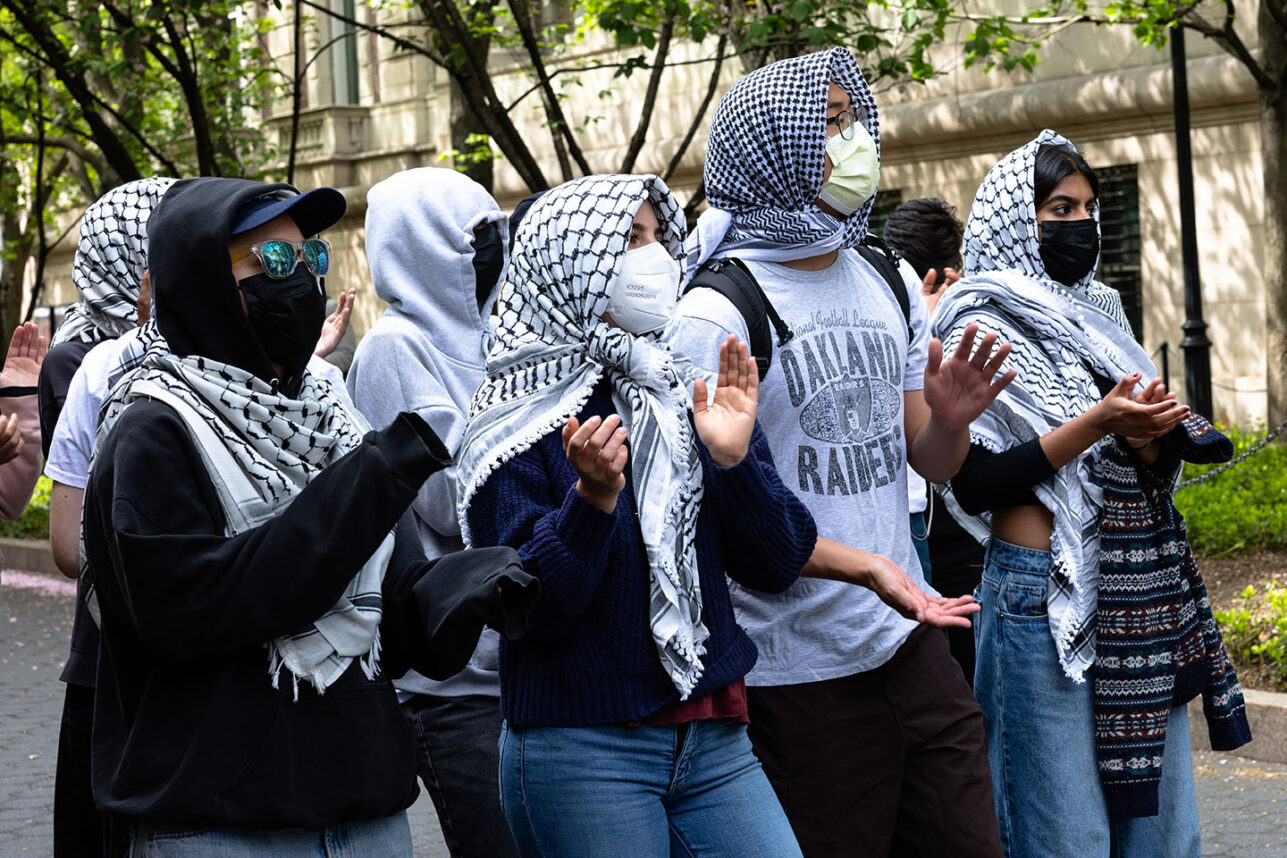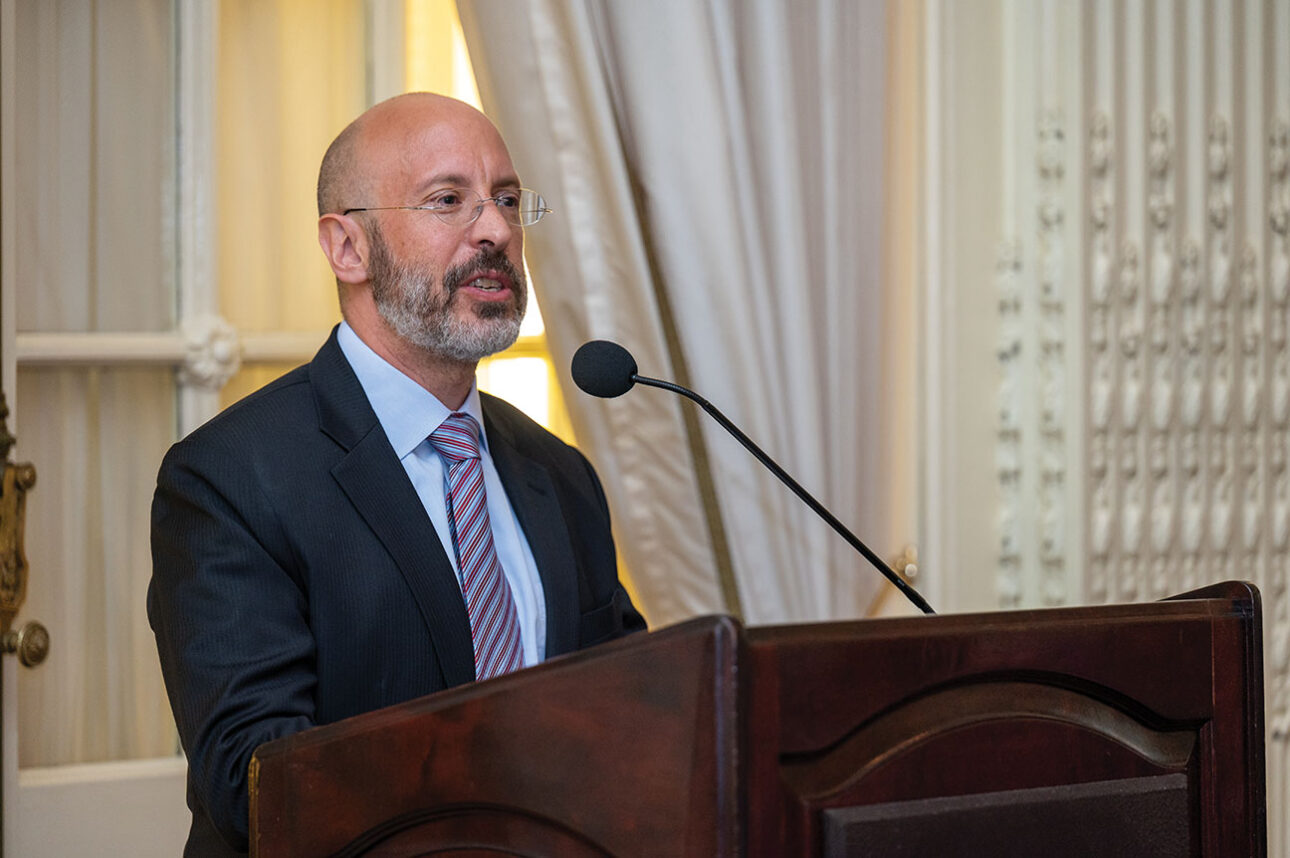Based on accounts of the people who knew him during his short life, Petr Ginz was the perfect person to create and pilot an underground magazine. The fact that he was 14 when he founded the magazine Vedem only adds to Ginz’s legacy.
Vedem translates to “in the lead,” and the half-Jewish, Prague-born Ginz was unquestionably a leader. A writer, artist and poet who completed several novels before he reached his teens, Ginz was also a meticulous editor who employed every technique he could devise to keep stories and illustrations coming in. Through his tenacity and enthusiasm, Ginz and his fellow occupants of the Terezin ghetto and concentration camp in Czechoslovakia —Theresienstadt in German — produced 83 editions of Vedem between 1942 and 1944, the longest-running magazine to be produced inside a Nazi camp.
Through Vedem, Ginz and his staff exposed the horrors of Terezin, the “model ghetto” that the Nazis established in Czechoslovakia. According to the creators of both a new exhibition at the Simon Wiesenthal Museum of Tolerance and an upcoming documentary film, Vedem cemented the artistic legacy of Ginz, who was killed at Auschwitz at the age of 16.
“Petr kept the train going,” said Rina Taraseiskey, curator of the exhibition “Vedem: The Underground Magazine of the Terezin Ghetto.” “He would bribe children with food when there weren’t enough articles. Sometimes he would write the whole issue by himself, and he would just sign it in with different pseudonyms.”
“What these boys were doing was extremely subversive,” added Danny King, the exhibition’s co-creator. “They were risking their lives in order to do this, but it was at once a reflection of the reality that was going on there, and also a bit of an escape. They expressed their opinions with humor and cartoons and poetry. They could forget they were in prison.”
The “Vedem” exhibition includes multiple illustrations and articles from several of the issues of the magazine. Poetry is included, along with editorials, some containing bathroom humor that reflects the ages of its authors. Other content is far more subversive and eye-opening. Sidney Taussig, who joined Vedem as a sports writer, penned a story about his job transporting corpses to the crematorium. In their “Rambles Through Terezin” columns, the boys took readers around the ghetto, interviewing police officers, doctors and nurses. Vedem also covered cultural happenings.
Ginz, Taussig and the magazine’s other key contributors called themselves “The Republic of Shkid” in homage to a Russian book about a children’s orphanage that had been a favorite of their counselor, Walter Eisinger. The boys all lived in a converted school building and ran their newsroom in secret using a discarded typewriter and smuggled printing supplies; the Shkid kids produced a 10- to 15-page edition of Vedem each week, gathering on Friday nights to secretly read and critique the edition.
Through the magazine, the Shkid boys exposed elements of the ghetto that functioned as their home and prison. “You probably think you know Terezin well,” Ginz wrote. “I want to prove you wrong.”
During the war, the Nazis converted the fortress town of Terezin, located 40 miles outside of Prague, and used it as a temporary transit camp to house Jews before they were deported to the death camps. Nazi propaganda presented Terezin as a “model camp” to perpetuate the myth that Jews were being treated humanely, and the camp became home to a number of artists, actors, musicians and scholars. According to the Encyclopedia of the Holocaust, 140,000 Jews were deported to Terezin from 1941 to 1945. Some 88,000 were transported to death camps and 19,000 were still alive when the camp was liberated in 1945.
The conditions of the camp meant that the authors of Vedem changed frequently. Of the approximately 100 boys, ages 12-16, who worked on the magazine during the course of its nearly two years of publication, only 15 survived the war. By storing the magazines in a box, which he buried and then recovered after liberation, Taussig is credited with saving its history.
Speaking at the opening of the exhibition during the MOT’s Yom HaShoah commemoration, the museum’s director, Liebe Geft, said that the boys of Shkid embodied the theme of maintaining one’s human spirit during dark periods.
“We are always looking for new portals thorough which we can introduce and encourage serious study of the Holocaust,” Geft said. “We have hundreds of thousands of young people coming through this museum, and this exhibit will resonate directly with all of them. Our museum speaks to empowering young people to stand up and find their voice, especially in the face of adversity, persecution and maltreatment.”
The granddaughter of a Holocaust survivor and resistance fighter, Taraseiskey was inspired by the Shkid boys’ fighting spirit. She is completing the documentary film about Vedem and is spearheading a graphic novel and educational outreach efforts. Under the guidance of art director Michael Murphy, the exhibition presents Vedem as it might look today as a contemporary punk zine.
“I tried to put the exhibition in an aesthetic that would be relatable to people of today,” Murphy said. “It’s kind of combining the 1940s zine Vanity Fair, which is what they were going for at the time, to kind of something that would be more relatable now.”
“We’re not in a war situation here, and we’re really trying to encourage people like these kids who weren’t writers or artists,” Taraseiskey added. “They became journalists because they were inspired, and because they did not want to lose their humanity or their fighting spirit.”
“Vedem: The Underground Magazine of the Terezin Ghetto” continues through July 3 at the Museum of Tolerance, 1399 S. Roxbury Drive.






















 More news and opinions than at a Shabbat dinner, right in your inbox.
More news and opinions than at a Shabbat dinner, right in your inbox.